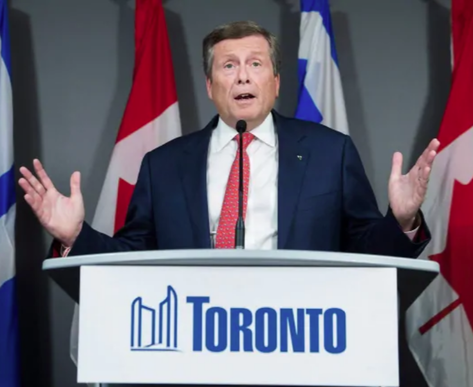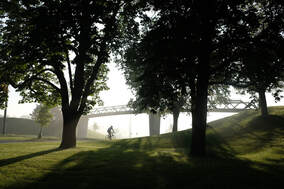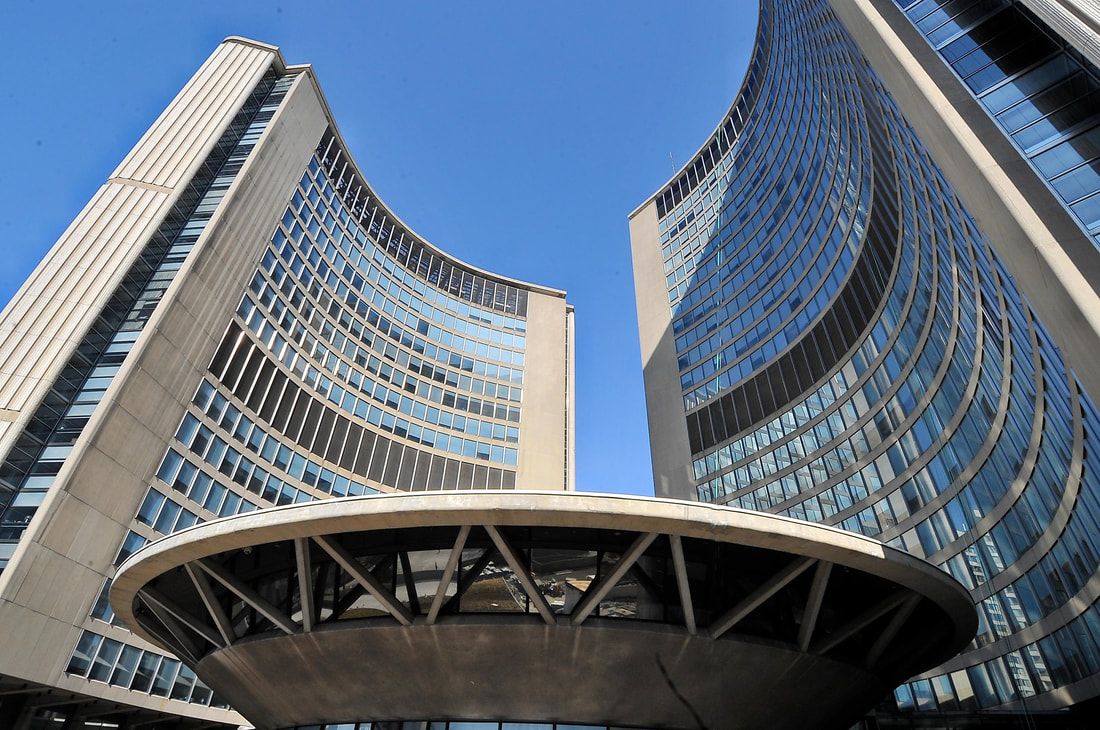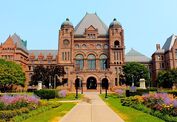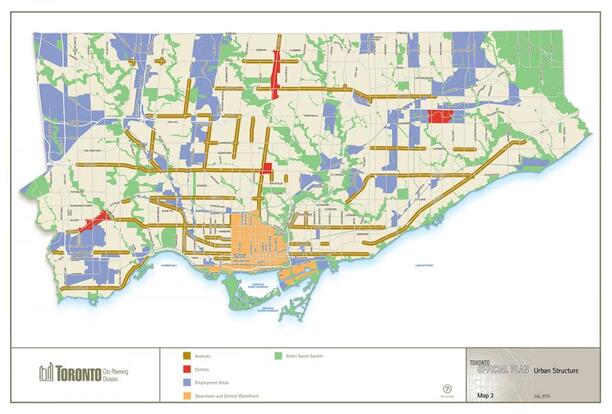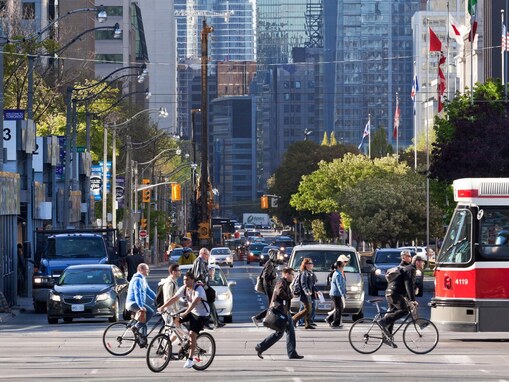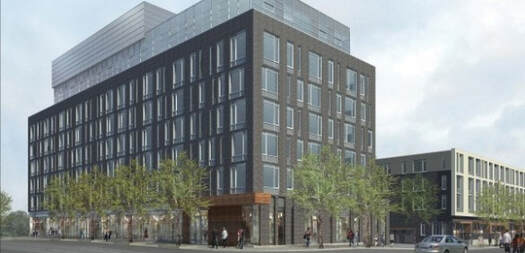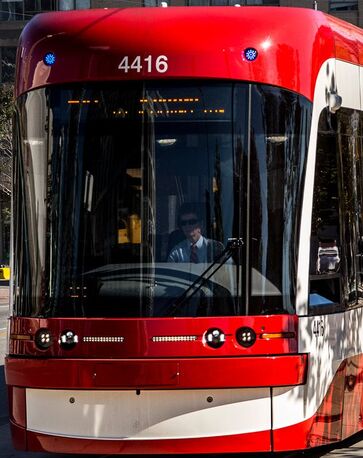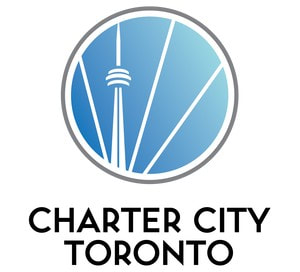WHAT POWERS WOULD TORONTO HAVE UNDER A CITY CHARTER?
Cities should not have to seek provincial permission to do municipal things. A key goal of a City Charter will be to give the city the authority to act independently of the province on matters within the municipal sphere and without having to go to the province for permission to make decisions. The city will be recognized as a mature level of government in its own right with the authority to act on its own on purely city matters.
Starting Point
he city should be given the exclusive authority to exercise all the powers which the province has already delegated.
The province would not be able to second-guess or overrule the city in these areas. EXAMPLES • licensing and standards • economic development • water and waste services • fire services • paramedic services • emergency management • long-term senior care • children's services • shelters • court services • parks and recreation • urban forestry • parking enforcement • and others. |
Exclusive Jurisdictions
The Charter will give the city sole authority to act in areas of municipal interest.
Any area of responsibility that affects only the city, or which applies only within the boundaries of the city, will be the exclusive authority of the city. Five core areas should be included in the first version of a City Charter for Toronto: • Land Use Planning • Streets • Housing • Local Transit • Taxation The Charter will also return the powers taken from the city in 2018 to make decisions over the form and structure of its own governance. |
Shared Jurisdictions
Recognizing that there are
some areas that overlap municipal boundaries or which require a co-operative and coordinated response, the Charter will establish areas of shared jurisdiction with the province. The Charter will detail clearly delineated responsibility, roles, authority and resources in these shared areas. EXAMPLES • Environment • Health and Public Health • Immigrant Settlement • Policing • the Waterfront • and others. The city will have the authority to enter into agreements with other municipalities on matters of shared interest. |
GENERAL PRINCIPLES
Permissive
|
Any powers for the city that are outlined in the charter should be interpreted in the broadest possible way. Any new purely municipal matters that arise (ride-sharing and short-term rentals may be examples) should be the responsibility of the city without the need to amend the Charter.
|
Oversight and Accountability
|
To guard against corruption and to ensure citizens have confidence in the city government, the city will be responsible, as it is now, to maintain a city Ombud, Auditor, Integrity Commissioner, Lobbyist Registrar and any other such institutions as are required. Areas of critical oversight in areas of shared jurisdiction would also be shared: for example, oversight of policing through institutions such as the SIU and OIPRD. The city may take a larger role in these areas.
|
Applicability
|
A Charter City would continue to be subject to all provincial laws of general application. Where there is any conflict between the City Charter and provincial law, the Charter will prevail. As well, the city should be entitled, using its own money, to increase or enhance any program or service standards set by the province or the federal government.
|
Dispute
|
Where there are disputes about the meaning of some sections of the Charter, or about activities of the province or the city, there should be an agreement to seek a resolution of the dispute by discussion and negotiations. If the disagreement persists the Arbitration Act should be used. It is very much hoped that parties will not take their disputes to the courts for resolution.
|
EXCLUSIVE CITY JURISDICTIONS
Land Use PlanningLand use planning concerns all aspects of property development – rezoning, Official Plans, land severance, committee of adjustment and others.
Currently, most land use matters require approval by a provincial body, so that City Council is not in the position of being able to make final decisions. Ontario is one of the few provinces that does not allocate land use responsibilities solely to municipalities. • The city should have the exclusive power to deny, approve, or place restrictions on any land use planning application including Official Plans, zoning and rezoning, subdivisions, minor and major variances, and severance consents, without requiring the approval of any provincial body. |
• To ensure Council decisions are appropriate and in keeping with the public interest, land use decisions should be reviewed by an independent, city-appointed body and its decision, after a fair hearing, will be reported to Council for a final determination. The city should be given the authority to establish and fund such an independent body.
• The city should be given the exclusive authority to establish and enforce development and intensification conditions such as minimum and maximum densities, heights, development charges, brown-field development goals, and controls to protect heritage and cultural features of structures and areas.
• The city should be given the exclusive authority to establish and enforce development and intensification conditions such as minimum and maximum densities, heights, development charges, brown-field development goals, and controls to protect heritage and cultural features of structures and areas.
Streets
|
Many of the regulations and restrictions the city wishes to place on streets – stoplights, or the use of traffic wardens, for example - require provincial approval.
This creates unnecessary duplication and expense and there’s no good reason to think that provincial officials have a better handle on local traffic conditions than city officials. • The city should have the exclusive power to regulate the sidewalks, lanes, bicycle lanes, streets, roadways and non-provincial highways within its boundaries, including road design and construction, speed limits, traffic calming, congestion and climate change strategies, signals and signage, tolls, cameras, road closures, vehicle restrictions and all other traffic measures. |
Housing
|
The city has a great interest in housing supply and conditions, including temporary housing, housing the homeless, social and affordable housing, and rental housing. It’s not clear that the city has the power to exercise control over all these matters. There is also the problem of funding social and affordable housing: this can be done through cost-sharing programs but preferably, if the city secures the needed revenue tools, through its own financial resources. • The city should have the exclusive power to provide and regulate affordable and social housing, including setting rent/income levels. |
• The city should have the power to enter into cost-sharing arrangements with private and public agencies, other municipalities, Ontario and Canada for the provision of social and affordable housing.
• The city should have the power to enter into agreements, including loans and mortgages, with various parties regarding the provision of social and affordable housing and to require certain levels of social and affordable housing be achieved in developments.
• The city should have the exclusive authority to provide temporary housing accommodation for immigrants and refugees, and for the homeless.
• The city should have the authority to control the demolition and conversion of rental housing, to control residential tenancies, to establish rent controls and to regulate short-term rentals.
• The city should have the power to enter into agreements, including loans and mortgages, with various parties regarding the provision of social and affordable housing and to require certain levels of social and affordable housing be achieved in developments.
• The city should have the exclusive authority to provide temporary housing accommodation for immigrants and refugees, and for the homeless.
• The city should have the authority to control the demolition and conversion of rental housing, to control residential tenancies, to establish rent controls and to regulate short-term rentals.
Local Transit
|
Since the early 1920s, the city has always been a leader in public transit serving city and neighbouring residents. In the late 1940s it undertook the construction of Canada’s first subway without provincial subsidies, using the surpluses produced by the transit system during the Second World War. Transit fares provide the majority of the TTC’s revenue base, unlike other North American cities which receive much higher levels of government subsidies.
Despite the lack of support, the Toronto Transit Commission has often been voted as the best transit system in North America, an accolade bestowed as recently as 2017. Funding problems have hobbled the transit system as it was expanded to serve the lower density suburban areas of Metro Toronto from the mid-1970s. At that time, the city was supported by provincial subsidies for both operating and capital expenditures. But those arrangements meant the province had a major say in how transit would be structured and designed in the city, and often their demands did not advance the cause of good public transit or reflect Toronto’s priorities. More recently, the province has decided that it will take over parts of the transit system. Serious questions have been asked about what the province’s plans entail and whether this change will be of any benefit to transit riders in the city. |
The system today integrates subways, buses, streetcars and LRTs into a fully-integrated network, providing advantages that could be lost if the system were to be split between multiple owners.
The best people to decide Toronto’s transit needs are transit users, city officials and city politicians accountable to city voters, not provincial officials and politicians, many of whom do not live in Toronto or use the TTC.
• The city should have the exclusive authority to provide and regulate public transit in the city. This should include Wheel-Trans, buses, streetcars, light rail transit, subways, other transit conveyances and ancillary properties including Union Station (which the city now owns.)
• The city should have the authority to enter into agreements with other municipalities and/or transit agencies in the GTA, the province and Canada to provide and improve service, share costs, and to create a seamless regional transit system.
The best people to decide Toronto’s transit needs are transit users, city officials and city politicians accountable to city voters, not provincial officials and politicians, many of whom do not live in Toronto or use the TTC.
• The city should have the exclusive authority to provide and regulate public transit in the city. This should include Wheel-Trans, buses, streetcars, light rail transit, subways, other transit conveyances and ancillary properties including Union Station (which the city now owns.)
• The city should have the authority to enter into agreements with other municipalities and/or transit agencies in the GTA, the province and Canada to provide and improve service, share costs, and to create a seamless regional transit system.


